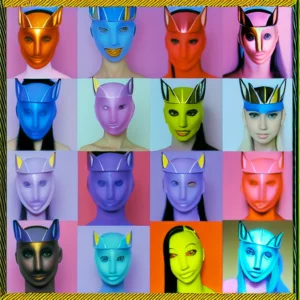Zones of Clarity
There are multiple zones of clarity. Let’s consider them.
First, there’s clarity with yourself – clarity about who you are, what you are, and about your skills and capabilities. This zone of clarity could be called self knowledge, self awareness, and self understanding.
Second, there’s clarity about this reality – about the world, the universe, and life in general. What is this place you find yourself in? What is its nature? What’s possible here? How does it work? What are its laws and rules?
And third, there’s clarity about your relationship with this reality. How do you connect with this world of existence? Can you trust it? Are you safe here? Do you need to protect yourself from threats, risks, or dangers? Which parts of this reality can you control or influence? And which would seem to be outside your control?
Those are the three big types of clarity:
- clarity about yourself
- clarity about this reality
- clarity about the relationship between you and this reality
Think of this like a human relationship such as a friendship, a romantic relationship, or a marriage. We can say there are three types of clarity in such situations. There’s clarity about who you are. There’s clarity about who your partner is. And there’s clarity about how you relate to each other. A lack of clarity in any one of those areas could inject confusion and uncertainty into the relationship. If you’re unclear about yourself, if your partner is unclear in their identity, or if you’re unclear about how you and your partner are connecting with each other, then any or all of those issues could lead to fuzziness and uncertainty about the relationship.
If we go another step further here, we can see that there are even more layers to the clarity puzzle. First, we have your understanding of your identity, of your partner’s identity, and of the connection between you and your partner. But additionally we also have your partner’s understanding of these three roles as well. So we have how your partner perceives you, your partner’s self-perception, and how your partner perceives your relationship connection.
And then we could go even more layers deep, like how you think your partner sees you, your mental model of your partner’s self-perception, and how you think your partner sees your relationship connection. And if we wanted to, we could keep considering more and more layers: I think that my partner thinks that I think that she’s… and so on.
Therein lies the challenge of clarity. Here we’re only considering a relationship between two people who may claim to know each other to some degree. Now add the entire physical universe and all of the people within it to this puzzle, and also note that all of these entities are in flux and never remain static, and the potential for confusion just grows astronomically huge.
So what hope do we possibly have to resolve the clarity puzzle for ourselves as individuals? It is such a hopeless challenge as it may seem?
Well, yes – it is as hopeless as it may seem. If we look at this challenge from a certain perspective, we have to admit that we can’t possibly know all there is to know about ourselves, about the universe, and about our relationship with the universe – and keep all of that information 100% current and accurate 100% of the time. It’s a truly impossible task. There’s just no way we can hope to achieve clarity this way.
The shortcoming to this approach is that we can never hope to achieve clarity through information. We’ll simply get lost in infinite possibilities with such an approach. We won’t be able to predict how circumstances will unfold with sufficient accuracy. We’ll be frequently surprised – surprised by other people, by the world at large, and even by our own behaviors. A sense of consistency will always elude us with this approach.
So let’s just admit the truth of this. An information-based approach to clarity is doomed to failure. It will never work for us. Does this mean our efforts are doomed to failure though? Not necessarily. It just means that we have to approach clarity from a different angle. We can’t rely solely on gathering information.
When you catch yourself needing to do more research, reading, and information acquisition to gain clarity about a major life decision, beware the bottomless pit. Information alone won’t answer your most important questions, although it may help you research and buy a good toaster.
So what’s the alternative? I recommend focusing on the relationship between you and your reality because improving that relationship also improves your clarity about yourself and about reality. The challenge is that improving this relationship is akin to deciding to trust reality more. The more you trust reality, the more your relationship with reality improves, and the more clarity you gain across the board.
This trust factor is up to you. It’s within your control to trust more, to trust the same, or to trust less. So in that sense, clarity is really a decision to be made. It’s the decision to commit to creating a deeper level of trust with reality.
This makes sense when you look at the other side of clarity. Suppose you do gain tremendous clarity. Then what? Now the expectation is that you’ll take action in alignment with that clarity. This requires trust as well.
So I encourage you to frame your clarity challenges not as challenges of figuring out the right information but rather as trust challenges. How much are you willing to trust? If you want more clarity, especially with the expectation that you’ll act in alignment with greater clarity, then work on trust.
A good way to begin is just to say aloud to reality when you’re alone, “I want to trust you more. Help me do that.” This works with people too. 🙂




